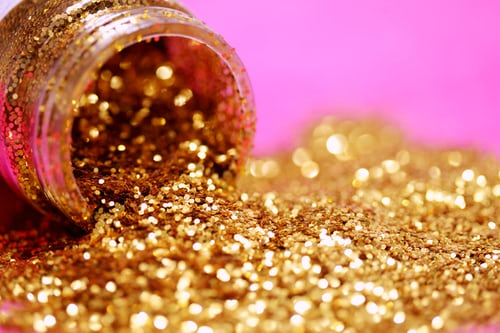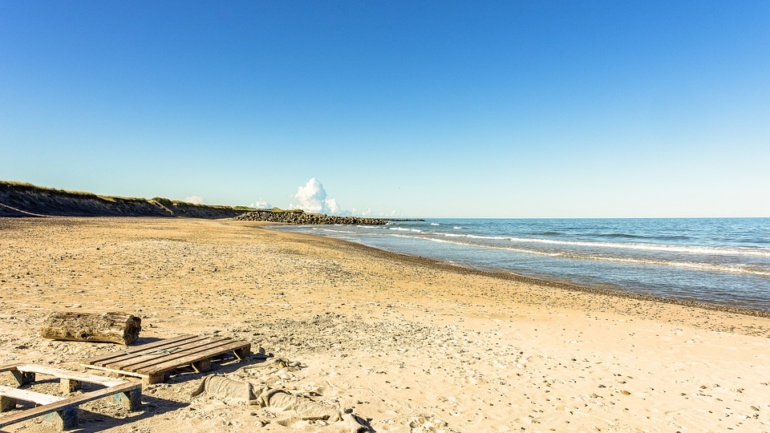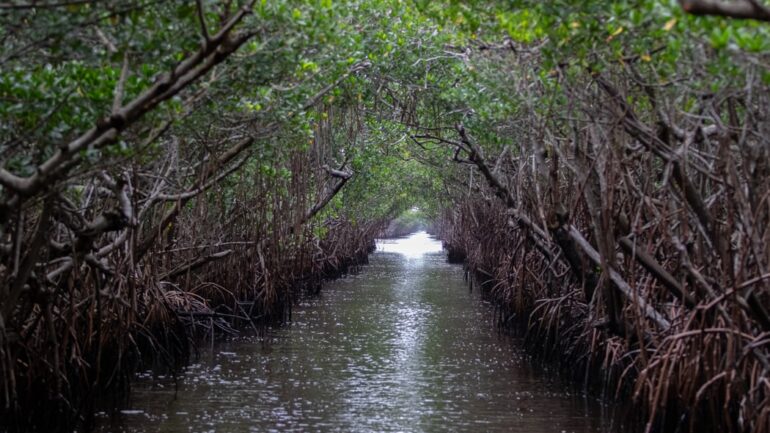By Victor Rivera-Diaz, Staff Researcher & Writer at Save The Water™ | November 18, 2020
Glitter, the tiny particles that add a glint to any occasion, can have not-so-joyous consequences. Instead, they can lead to glitter pollution. This is because they are a form of primary plastic, or small bits of plastic that enter aquatic environments in sizes of a couple of millimeters. In fact, some are even smaller—about the size of the period at the end of this sentence.
According to current estimates, about 150 millions tons of plastic circulate in the world’s waterways, which reduces water quality and negatively impacts humans and animals. For decades, dead marine animals have been washing up onshore. The culprit? Microplastics, with glitter as just one important example.
Moreover, recent studies indicate that multiple types of glitter limit root growth of aquatic plants, diminish nutrients, and build up in the bodies of aquatic animals. For us humans, these microplastics can go unnoticed in our favorite seafood dishes.
Getting to the root of glitter pollution
In the results of a recent outdoor study, known as a mesocosm, the ecologist Danielle Senga Green and her team of researchers found that glitter can have a notable impact on aquatic life in freshwater.
A study published in the Journal of Hazardous Materials made a distinction between two types of glitter. There is traditional glitter, and biodegradable glitter that breaks down naturally.
More specifically, the study included traditional polyethylene terephthalate (PET) glitter. This is a non-biodegradable type of glitter that consists of a polymer, or plastic, core that is then covered with shiny aluminum and sealed with a transparent plastic coating.
Among the supposedly biodegradable glitter available on the market, the study included three other types:
- Glitter made of a cellulose core, covered with aluminum, and sealed with a thin plastic film
- Mica glitter made from naturally occurring minerals that do not require a coating of any kind
- Synthetic mica glitter, a purer form of mica mineral powder made in the lab
In general, the team of researchers observed that traditional PET and biodegradable glitter had similar effects on freshwater ecosystems. For instance, the presence of all four glitter types resulted in a notable reduction in the root lengths of common duckweed. Further, the presence of cellulose-based glitter led to a significant increase in the invasive New Zealand Mud Snail.
Finally, the researchers observed lower levels of nitrates in freshwater treated with the biodegradable glitter types at 8 and 15 days of the study. These nitrates are naturally occurring chemicals present in soil, water, and air. For plants, they are a potent fertilizer that provide the nitrogen necessary for plant growth.
A fateful shimmer through the ages
Historically, glitter made from mica or other sparkling minerals, dates back to prehistoric times. As one example, cave paintings incorporated various glittering substances. Modern glitter, on the other hand, was first introduced in the 1930’s to replace glass glitter.
To this day, everything from cosmetics to architecture uses glitter. A staple at festivals and crafting sessions, glitter has not lost its luster. Far from it, these seemingly harmless particles even shine at protests in what are known as glitter bombs, which involves dumping glitter on an opponent.
Unfortunately, modern glitter is not harmless for water sources. In one study, a team of marine ecologists found that fish that consume microplastics take more fatal risks at an early age. As a result, many die en masse. In another startling observation, a team of BBC reporters documented flocks of sea bird chicks starving to death from stomachs full of plastic fragments.
While the research on glitter pollution is still somewhat new, microplastic pollution as a whole has been detected in drinking water from both tap and bottled water sources.
It is highly likely that glitter litter, given its ready-made microscopic size, will only continue to contribute to the problem of microplastic pollution.
Not all glitter is made the same
Interestingly, the bulk of the existing research dealing with glitter has mainly taken place within the realm of forensic science. For example, glitter particles are unique enough between manufacturers and even batches that they can be used to match up a suspect to a crime.
For scientists, this singularity makes glitter a possible “flag item,” meaning that it can be used to trace the likely source of pollution.
Wastewater sludge containing glitter particles is a case in point. It is able to link a service area to the given wastewater treatment facility.
Scientists have noted that events such as festivals and holidays tend to lead to higher glitter pollution activity in a shorter span of time. In cases such as these, a comparison of glitter particles is an easy way to trace particles.
Glitter bans on the rise
In recent years, scientists have begun to weigh in on the potential effects of glitter pollution. Ultimately, this has led to calls for an outright ban on plastic glitter.
“It doesn’t make sense to be making products that we use for minutes when they last for centuries,” says Dr. Sherri Mason, who serves as the sustainability coordinator at Penn State Behrend.
Prohibition is now underway for glitter, with festival companies in places such as the United Kingdom placing a ban on glitter for festival-goers. In addition, British brands are removing glitter from their holiday products.
Despite these measures, further studies are necessary to close the gap on glitter pollution research.
In addition, current regulations only require testing of the core substance in order to meet standards for biodegradability. Sadly, these glitter types often still contain a plastic coating.
A shimmer of hope for glitter
Despite all the doom and gloom the research is placing on glitter these days, not all glitter is bad. Here are some steps you can take to continue to use glitter responsibly:
- Look for 100% plastic-free glitter brands, such as Bioglitter®
- Consider natural alternatives for decoration, such as sand (not recommended for cosmetics), shells, and flower petals,
- Wipe glitter off with a moist paper towel instead of washing it off in the sink/shower
Moving forward, it will be necessary to consider alternatives in order to curb plastic pollution in our waterways. Ultimately, the prohibition of plastic glitter and regulations for biodegradable glitter will require additional research.




